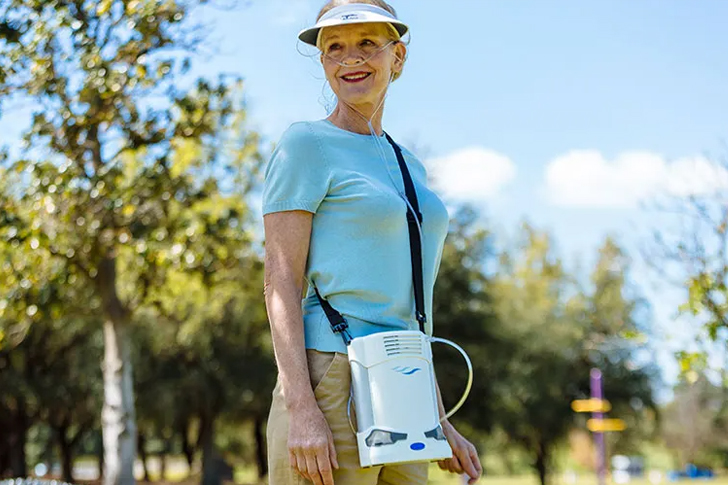Portable Oxygen Concentrators: Overview of Current Pricing
The need for portable oxygen concentrators (POCs) has seen a significant rise, particularly among patients with chronic respiratory diseases such as COPD (Chronic Obstructive Pulmonary Disease), asthma, and pulmonary fibrosis. These devices offer the freedom to maintain mobility and a semblance of a normal lifestyle by delivering oxygen therapy on the go. In this article, we will explore the current pricing landscape of portable oxygen concentrators, discuss factors affecting their cost, and what consumers should consider before making a purchase.

What are Portable Oxygen Concentrators?
Portable oxygen concentrators are medical devices used to deliver oxygen therapy to patients who have low levels of oxygen in their blood. Unlike traditional oxygen tanks, these concentrators filter and concentrate oxygen from ambient air and can operate continuously while plugged in or on battery power. Lightweight and compact, these devices have transformed oxygen therapy by offering unprecedented mobility for its users.
Pricing Factors for Portable Oxygen Concentrators
The cost of portable oxygen concentrators can vary widely based on several factors. The primary determinants include the oxygen output (measured in liters per minute), battery life, size and weight of the device, specific technological features such as pulse dose or continuous flow, and brand. Prices generally range from $1,500 to over $3,500. The variation in features and capabilities generally accounts for the spans in price points. Advanced models offering features like higher flow rates or dual settings (pulse and continuous flow) can cost more due to the added complexity and increased material costs.
Overview of Current Pricing
As of now, a basic portable oxygen concentrator, which offers both continuous flow and pulse dose settings, ranges between $2,000 and $3,500. For example, the Inogen One G4, known for its compact size and effective oxygen delivery, is priced around $2,295. This model is popular for its balance of price and performance, particularly suitable for patients requiring lower flow settings.
On the higher end of the spectrum, the Respironics SimplyGo provides more robust features and greater oxygen output, costing approximately $2,495. This device not only supports pulse dose oxygen delivery but also has a continuous flow setting, a rarity among lightweight portable models. Its cost reflects its advanced capabilities and versatility.
For those seeking an even more budget-friendly option, the Zen-O portable concentrator offers versatility and performance at about $2,895. It allows for both continuous flow and pulse dose settings, catering to a broader range of oxygen therapy needs.
Influence of Technology and Brands
Technological advancements have significantly impacted the pricing of portable oxygen concentrators. Features such as improved battery life, user-friendly interfaces, multi-setting capabilities, and reduced size all contribute to the price. Brand reputation and after-sales service also play vital roles in determining cost. Established brands like Inogen, Respironics, and AirSep price their products higher, partially justified by reliability, customer service, and user trust.
Financial Assistance and Insurance
The price of portable oxygen concentrators can be prohibitive for many. Some users may have part of the cost covered by insurance providers including Medicare or private health insurance, although coverage varies greatly by policy. Typically, insurance companies require detailed medical prescriptions and proven necessity of oxygen therapy for reimbursement or coverage support. Financing options are also available through many medical supply stores or directly from the manufacturers.
Additional Costs to Consider
Beyond the initial purchase of a portable oxygen concentrator, there are ongoing costs that should be factored into the total expenditure. Consumables such as batteries, external chargers, carry bags, and replacement filters create additional running costs. Regular maintenance and occasional repairs also contribute to the overall financial burden of owning and using a POC.
Choosing the Right Portable Oxygen Concentrator
When selecting a POC, it is important to balance the cost with the specific needs of the user. The appropriate device should meet the flow requirements prescribed by a healthcare provider and allow for flexibility in lifestyle. Lightweight models with long battery lives might be preferable for active users. In contrast, users who stay mainly indoors may prefer more robust models with continuous flow settings despite their additional weight and cost.
Conclusion
Portable oxygen concentrators represent a significant investment but also offer invaluable benefits to users requiring oxygen therapy. The current market offers a range of models designed to accommodate various needs and budgets. It is crucial for potential buyers to research thoroughly, consider long-term costs, consult healthcare providers, and potentially seek financial assistance through insurance. Understanding the blend of technology, intended use, and available budget will aid in selecting the most suitable POC, ensuring that it provides the necessary support for a better quality of life.







Recent Comments